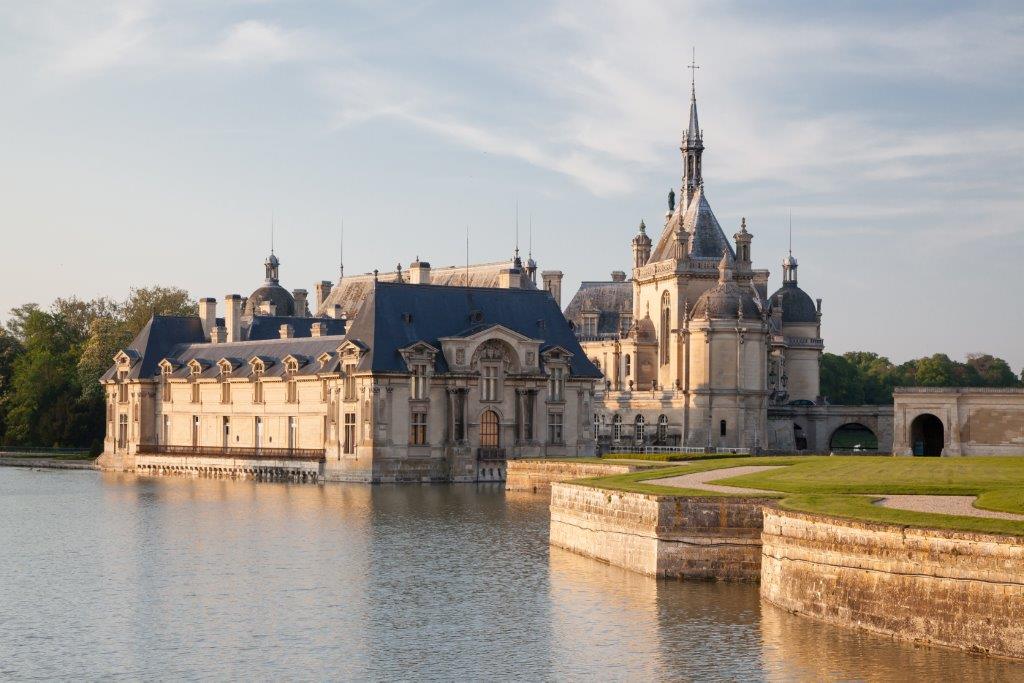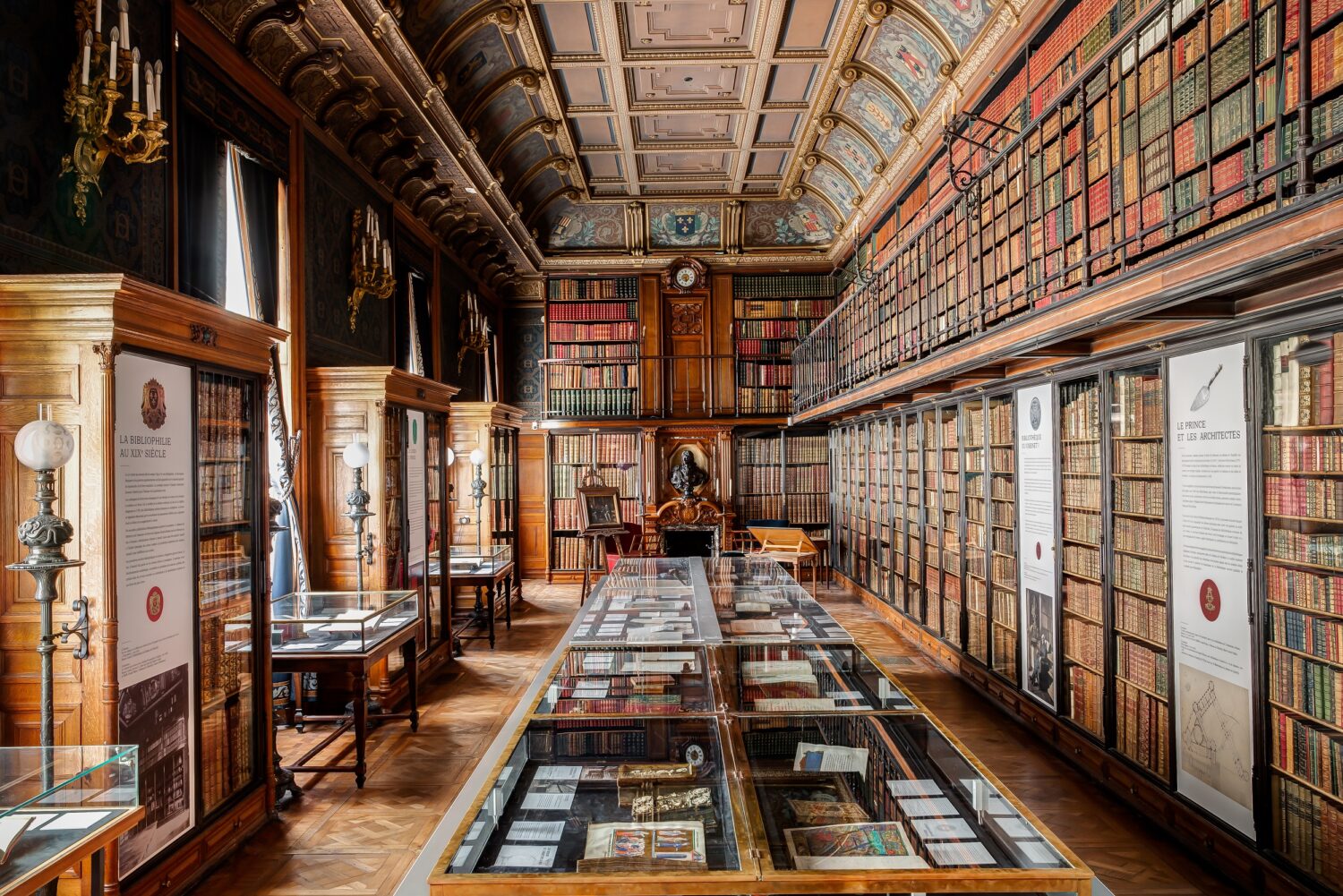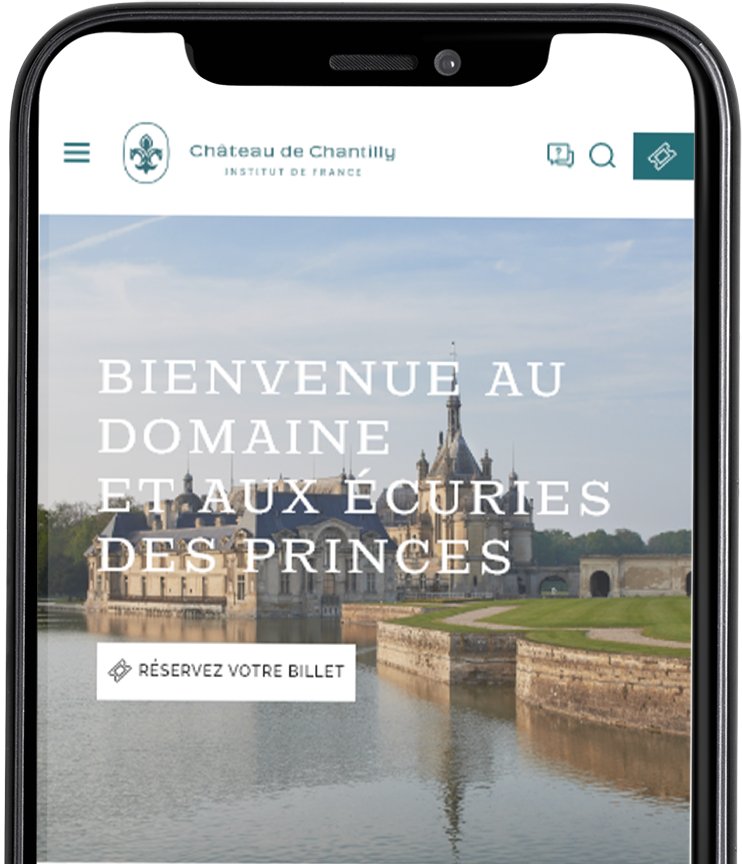The legacy of a passionate bibliophile
The Château de Chantilly houses one of the most extensive libraries France. The treasures accumulated by the various owners of Chantilly were added to and enhanced with passion by the Duke of Aumale, who was the greatest bibliophile of his time. The reading room designed by architect Honoré Daumet at the end of the 19th century forms a showcase for the manuscripts of the princes of Condé and the Duke of Aumale’s treasures. Homage is paid here to the Great Condé, whose bust, by Coysevox, draws attention to the fireplace, while the coats of arms of the prince’s fellow soldiers adorn the ceiling.
An exceptional collection
Having inherited the rich manuscripts of the Princes of Bourbon-Condé, the Duke of Aumale became “decidedly bibliomaniac”, according to his own expression, around 1850, during his exile in England. The prince multiplied acquisitions across Europe, from booksellers and at major auctions. Wealthy, infatuated with history and well advised, Aumale purchased complete collections or single volumes such as, The Très riches heures du duc de Berry.
The prince had a keen interest in the most ancient books, rare and precious book. He relished the best preserved books, classical literary and artistic heritage, and the history of France. The collection brings together an exceptional set of unique books, in particular illuminated manuscripts, including major pieces of medieval art.
The quality of antique book bindings is one of the collection’s riches. The Duke of Aumale placed orders with the greatest binders of his time (Trautz, Capé, Duru) and in 1850 he admitted “I know rare books are expensive; I know that beautiful bindings are too; but I love both, and especially the two together, and I want to pay the price they deserve”.
Of the 60,000 volumes contained in the Chantilly collection, almost 19,000 volumes are exhibited in the Reading Room: these 1,500 manuscripts and 17,500 printed documents cover all fields of knowledge. The manuscripts, the oldest of which dates from the 10th century, include 200 illuminated medieval manuscripts. The printed documents include approximately 700 incunables (pre-1501) and 2,500 books printed in the 16th century.
Functional, sober architecture
The reading room is a modern library, remarkably well integrated into the ancient structure of the Petit Château, built during the Renaissance. The metal structure with two levels designed by architect Honoré Daumet is typical of library architecture in the second half of the 19th century.
In order not to disrupt the alignment of the books that make up the core of the decor, the entrance door is covered with fake shelves and the stairway leading to the gallery is invisible. The iron shelving units are trimmed with leather to protect the collections. The lighting – formerly gaslights – and the embedded desks ensure comfortable reading.
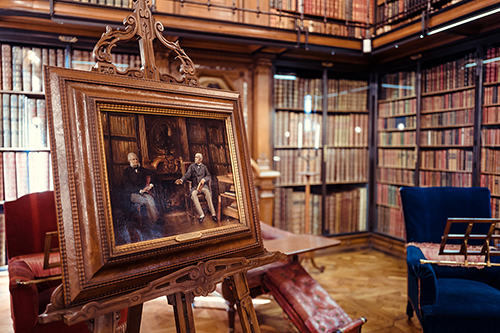
The reading room was one of the Duke of Aumale’s favourite rooms: a painting by Gabriel Ferrier depicts him at the end of his life actively working on the catalogue of his manuscripts with his friend and former tutor, Cuvillier-Fleury, who assisted him in acquiring books.
The most precious manuscript in the world
Almost 1,500 manuscripts are kept in Chantilly. The number and quality of illuminated manuscripts makes the collection the second largest in France after that of the National Library of France.
The Très riches heures du duc de Berry is one of the most precious manuscripts in the collection, reputed to be the most beautiful manuscript in the world, “The King of Manuscripts” according to the Duke of Aumale. In any case, it is the most famous and most admired masterpiece in the Château de Chantilly’s collections.
This book of hours, commissioned by Duke John I of Berry from the Limburg brothers in the 15th century, was acquired by the Duke of Aumale in Genoa in 1856. As it is extremely fragile, the original manuscript cannot be permanently exhibited and visitors are invited to discover it in a digital version.

And lots more…
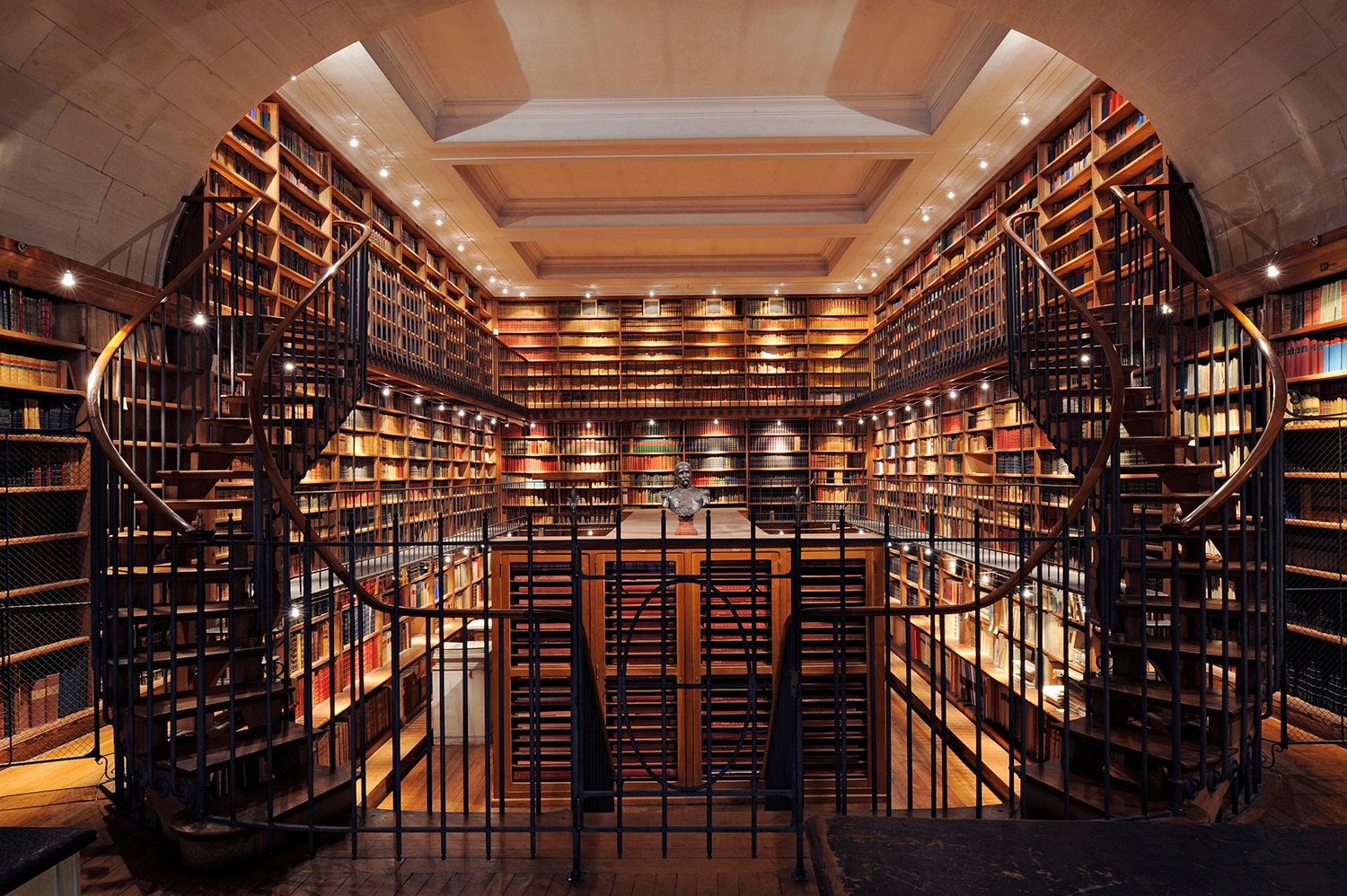
Not all of the château’s library is concentrated in the Reading Room. The Gallery of Painting houses art books, the Santuario is home to The Hours of Étienne Chevalier, and the Theatre library (in the old theatre designed by the last Prince of Bourbon-Condé in the plinths of the Château) has an impressive collection of history books.
The Condé Museum also houses the château’s extensive archives, kept since the 11th century by the lords of Chantilly, the papers of the powerful de Montmorency and Bourbon-Condé families, and the Duke of Aumale’s private archives. The archives contain an abundant correspondence and documents of major historical interest.
In all, more than 60,000 volumes, 80,000 letters, 8,000 maps and plans, and 3,000 boxes and registers of archives are contained in the various parts of the château.
Temporary exhibitions are held in the Reading Room all year round, enabling visitors to discover these exceptional collections that form the oldest and most precious core of the Condé Museum.
Log onto: www.bibliotheque-conde.fr to find out more about the collections and access the catalogue.

